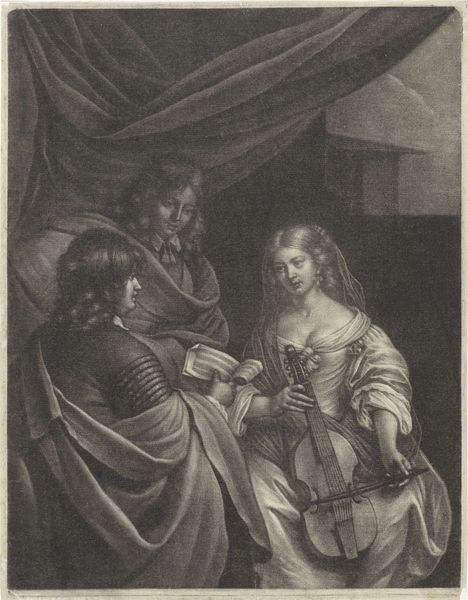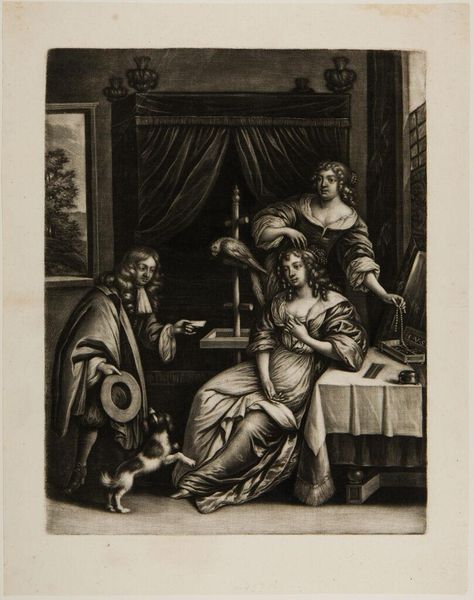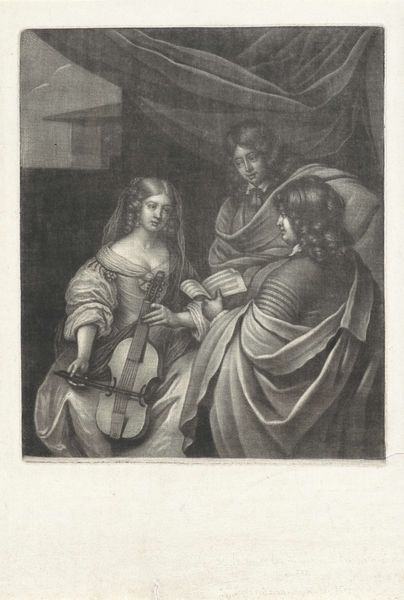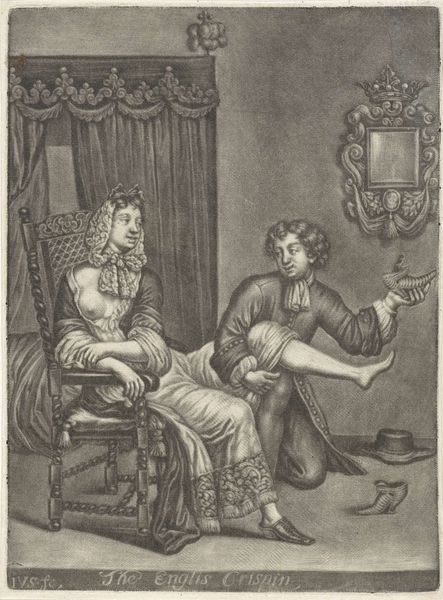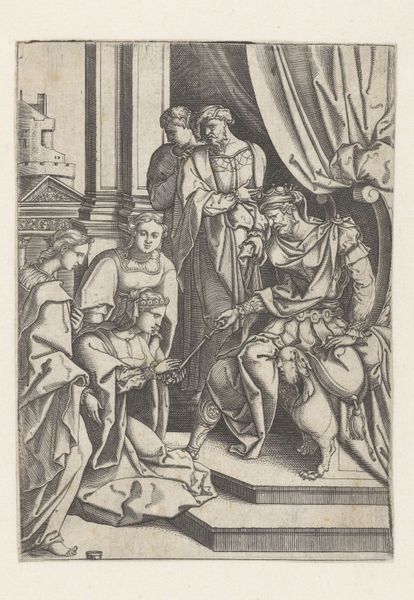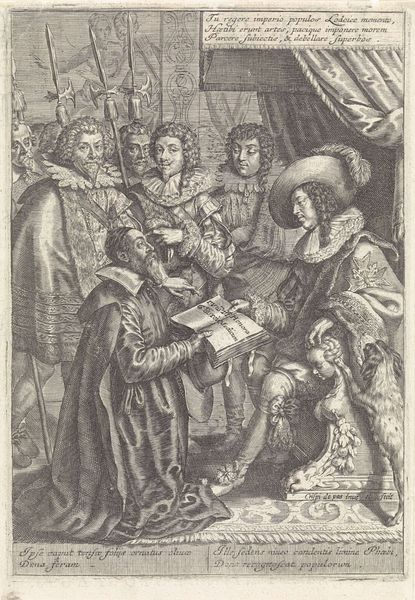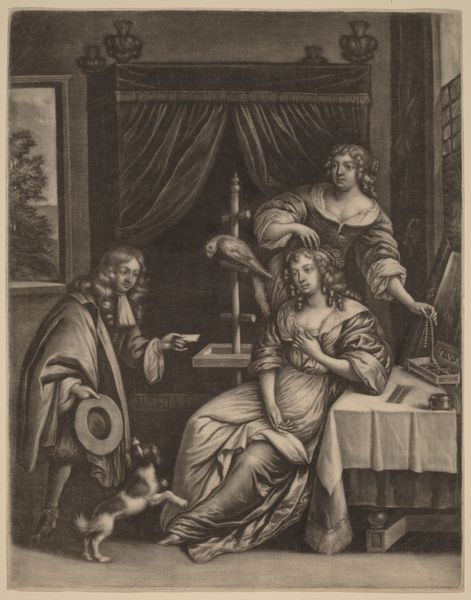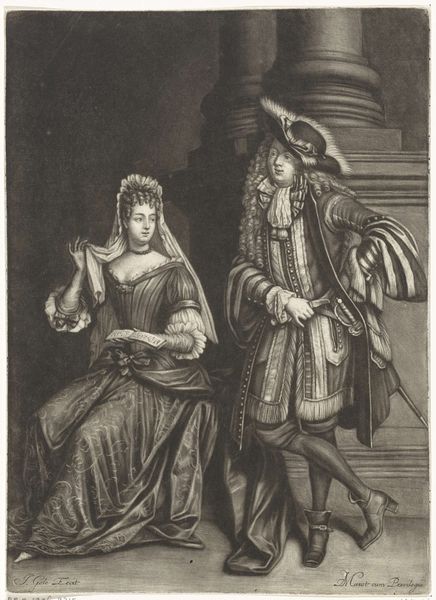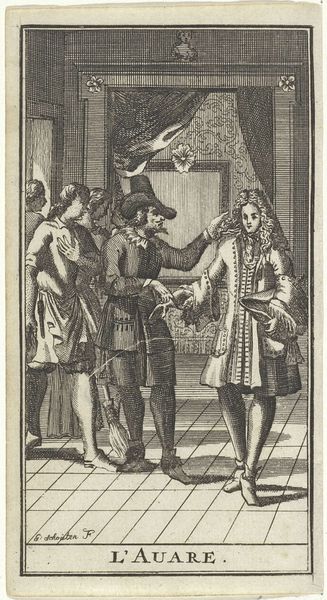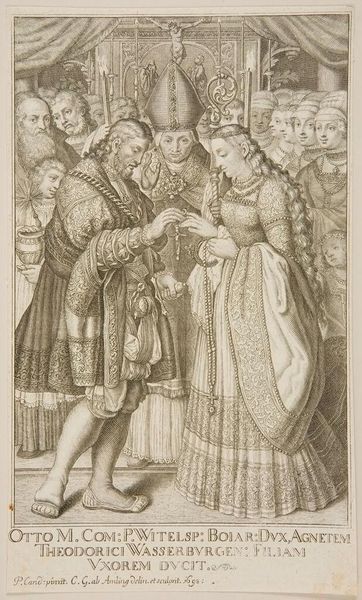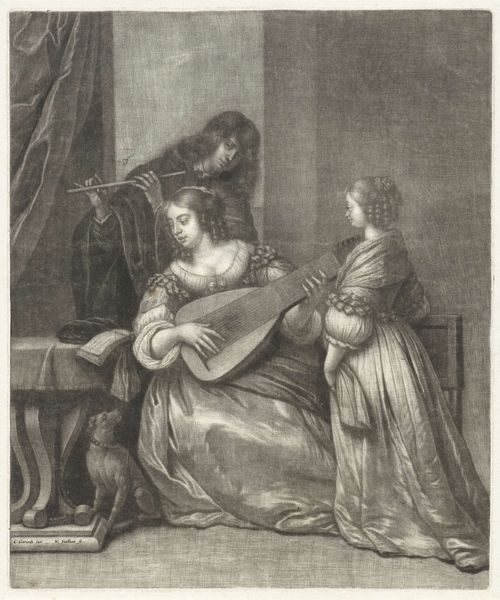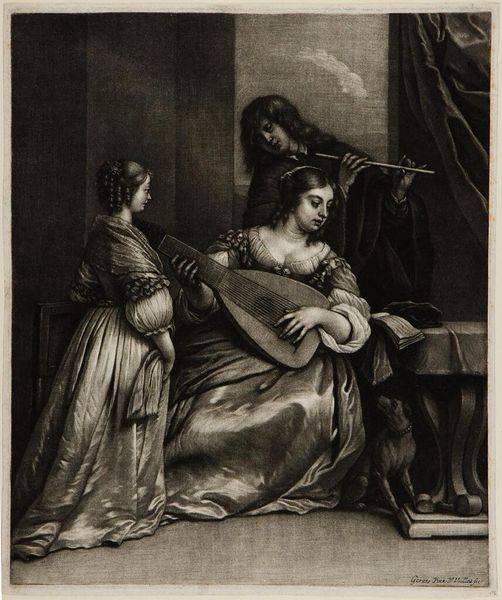
print, glass, engraving
#
portrait
#
character portrait
#
baroque
#
portrait image
# print
#
glass
#
group-portraits
#
portrait drawing
#
engraving
Dimensions: height 332 mm, width 245 mm
Copyright: Rijks Museum: Open Domain
Curator: Pieter Schenk created this engraving, "Boy Offering a Tray," sometime between 1670 and 1713. Editor: Immediately, I'm struck by the controlled staging and performative stillness in the faces. It’s almost as if the figures are hyper-aware of being watched or perceived. Curator: Indeed. And engravings, particularly portraits like this, acted as powerful tools of visual communication during that era. What we read as "stillness" now might have represented idealized composure. We're looking at a clear display of wealth, and status—with what feels like highly symbolic offering between members of the family? Editor: Possibly. I am struck by what the act of ‘offering’ signifies here. What is this boy giving up and who benefits? The presence of a child performing service amplifies existing power structures within families and society more broadly. Notice that we lack any true emotional expression. The boy is faceless. It speaks volumes about his social standing, doesn’t it? Curator: It makes me wonder, though, about the deeper intent here. Are we meant to view a literal snapshot of daily life or, might Schenk have subtly challenged those very hierarchies through an understated portrayal of human connection amidst the strict social scripts of the time? Perhaps these characters have an emotional attachment we may miss? What do you make of the ever-watchful eyes of that house dog? I think Schenk masterfully renders emotional tension by contrasting that rigidity in form with soft shadows around faces. Editor: I find it difficult to imagine past oppression here. From an intersectional lens, that tension serves primarily to highlight societal inequities that were accepted at this historical moment in wealthy Europe. Even this precious little family unit, as the viewer sees, must have also acted out oppressive routines in the household with their other children. Curator: Agreed! And the permanence afforded through the medium of engraving allows such commentaries to live through history and serve our moment too. How might this imagery speak to you, as a member of our present culture? Editor: In an age that increasingly fetishizes self-determination and expression, revisiting these posed scenes serves as a stark reminder that societal performances—who holds the ‘tray’, both figuratively and materially—remain integral to negotiating and shaping our realities, however unequal.
Comments
No comments
Be the first to comment and join the conversation on the ultimate creative platform.

